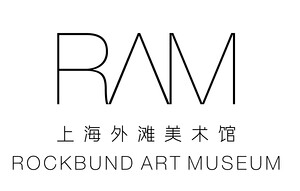If you don’t use your eyes to see, you will use them to cry
March 23–May 26, 2019
20 Huqiu Road
Shanghai
China
The Rockbund Art Museum is very pleased to present the first institutional solo exhibition in China by the renowned German artist Tobias Rehberger. If you don’t use your eyes to see, you will use them to cry will be on display from March 23 to May 26, 2019. The exhibition looks to showcase newly commissioned works and site-specific installations created especially for the Rockbund Art Museum. Through an array of visually confounding objects and environments, Rehberger continues to pioneer a range of production techniques and forms of social intervention that explore how we interact with space and perceive the connection between everyday life and art.
The exhibition’s title, If you don’t use your eyes to see, you will use them to cry, is a truism that expresses the connection between how we choose to see the world and the importance of this decision in defining the quality of our experience and engagement with it. Adept at incorporating public environments and everyday objects into his work, Rehberger brings a butcher shop, flower arrangements, a teahouse, a bar, and public signage to occupy the different floors of the Museum. Many of these works play with notions of collective memory and cultural displacement, highlighting the way ideas circulate and transform in new contexts.
Outside of the museum, a neon sign hints at the fully functional “butcher shop” that now sits on the first floor. On the second floor is “Vase Portraits” series (1997 to 2016), an “exhibition within an exhibition,” in which a collection of more than 50 uniquely composed flower-adorned sculptures form an homage to and reveal the aesthetic quirks of a community of artists and friends associated with the artist. A teahouse on the third floor incorporates Western misinterpretations of a traditional Japanese tea ceremony, the design of the structure diverging from the procedures of this highly-prescribed ritual to create a new type of gathering. On the fourth floor, the artist has created an impressive display of LED light sculptures that mimic the commercial signage systems found in outdoor public spaces. Free Coffee Free Parking Freedom (plug & play version) (2018) invites the audience to remotely control the brightness and level of noise in the space as the lights synchronize to music played from a mobile phone. The fifth-floor mezzanine will display a new iteration of the artist’s ongoing “Pixels” series (2019), which asks the viewer to constantly adjust his or her distance in relation to a vivid sequence of monochrome mosaic tiles. Depending on one’s perspective, the work appears alternately as an abstract composition of colors or a panoramic landscape of images.
Occupying the entire top-floor of the museum, Forbidden in Heaven, Useless in Hell (El Redomon version) (2019) is a social artwork that functions as a bar. Conceived in collaboration with the Shanghai-based bar Blackbird, the bar is open only at night. From ceiling to floor, and extending to the furniture, the entire surfaces of the bar have been covered by the artist—an evolution of his series inspired by “dazzle” camouflage, a motif that has formed the basis of many of his projects including his Golden Lion-winning installation at the 53rd Venice Biennale. Marking a unique site-specific public commission for the museum, the audience can therefore drink at a bar boasting an impressive view of a giant indoor “sun sculpture,” which blinks on and off according to the rise and set of the sun in El Redomon, Argentina—a location positioned on the exact opposite point of the globe to Shanghai. The collaboration between the Rehberger and Blackbird also book-ends the entire exhibition as a whole by extending also to the first floor butcher shop. The butcher shop doubles as another artwork that gives the opportunity for viewers to not only look at, but also to enjoy an artwork composed of optical illusions and meat items that can be eaten on-site or taken away.



